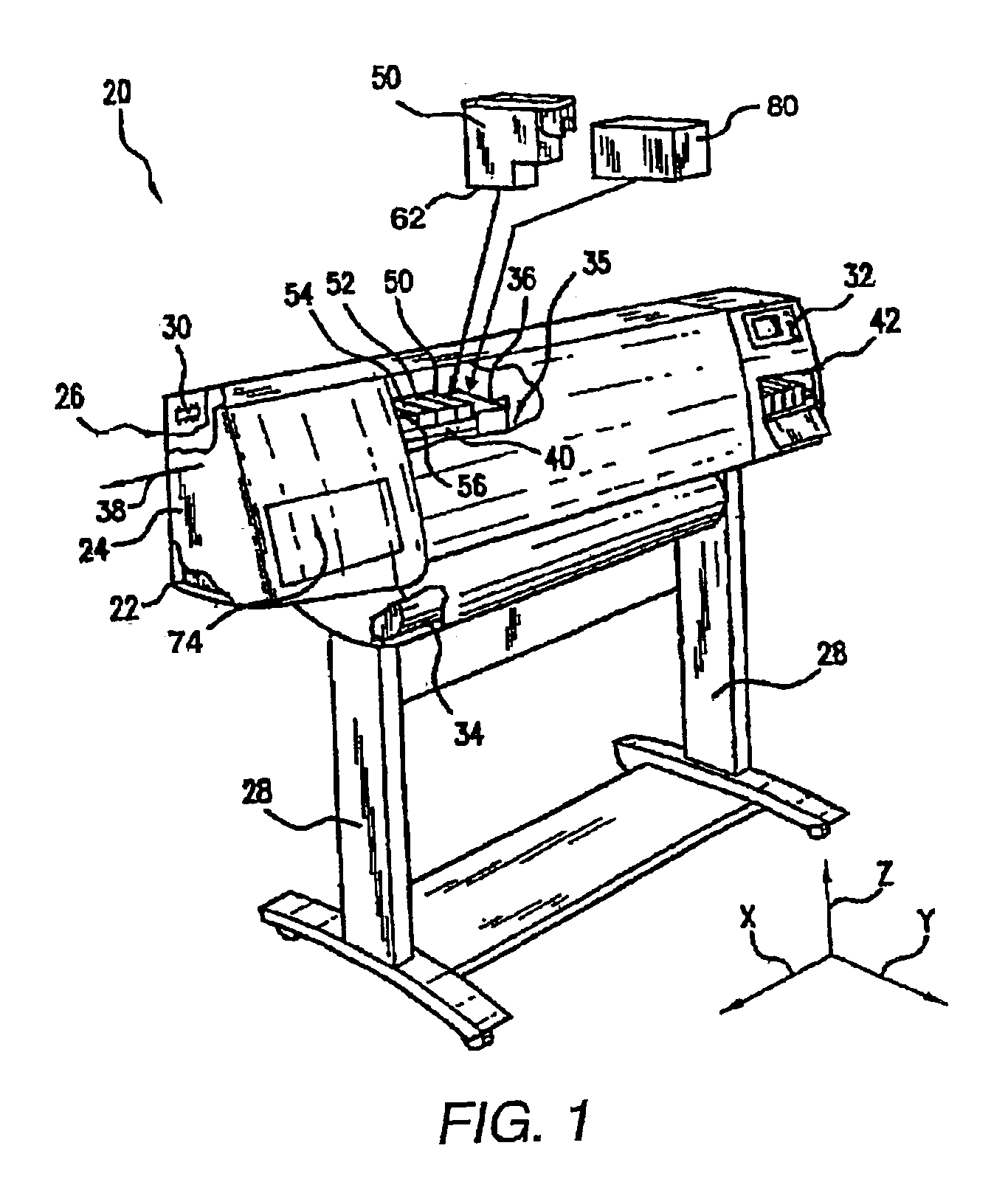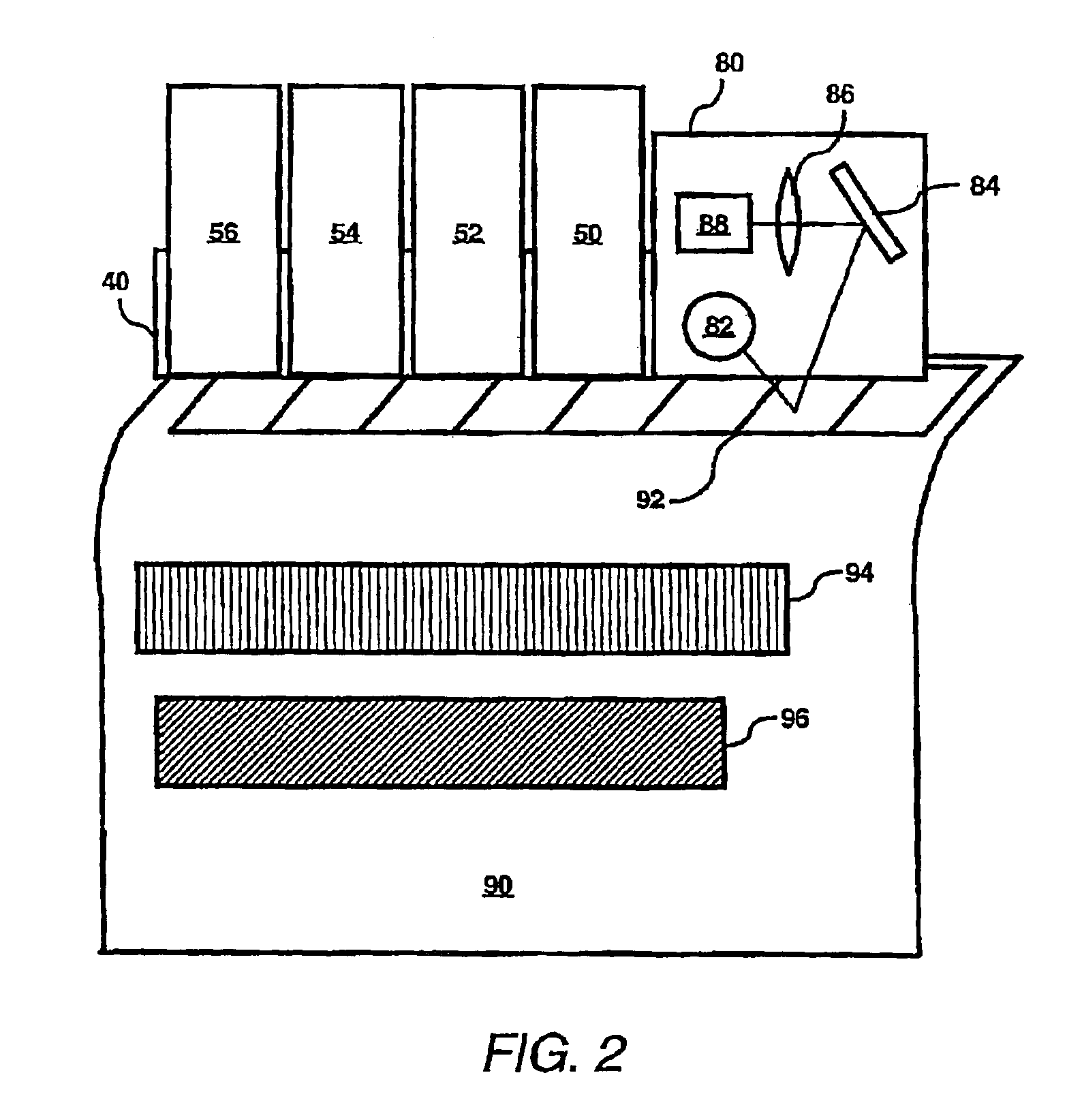Method and system for calibrating ink ejection elements in an image forming device
a technology of ink ejection elements and image forming devices, which is applied in the direction of printing, other printing apparatus, etc., can solve the problems of misalignment of the print carriage assembly, other misalignments, and misalignments, and achieve the effect of reducing the time required
- Summary
- Abstract
- Description
- Claims
- Application Information
AI Technical Summary
Benefits of technology
Problems solved by technology
Method used
Image
Examples
Embodiment Construction
[0018]For simplicity and illustrative purposes, the principles of the present invention are described by referring mainly to an exemplary embodiment thereof. In the following description, numerous specific details are set forth in order to provide a thorough understanding of the present invention. It will be apparent however, to one of ordinary skill in the art, that the present invention may be practiced without limitation to these specific details. In other instances, well known methods and structure have not been described in detail so as not to unnecessarily obscure the present invention.
[0019]According to an embodiment of the present invention, the calibration of the printheads of a printing mechanism may be performed in a relatively short period of time as compared to known techniques. In one respect, the time required to perform the calibration may be substantially reduced by implementation of an optical scanner configured to have a relatively wide field of view. The relative...
PUM
 Login to View More
Login to View More Abstract
Description
Claims
Application Information
 Login to View More
Login to View More - R&D Engineer
- R&D Manager
- IP Professional
- Industry Leading Data Capabilities
- Powerful AI technology
- Patent DNA Extraction
Browse by: Latest US Patents, China's latest patents, Technical Efficacy Thesaurus, Application Domain, Technology Topic, Popular Technical Reports.
© 2024 PatSnap. All rights reserved.Legal|Privacy policy|Modern Slavery Act Transparency Statement|Sitemap|About US| Contact US: help@patsnap.com










